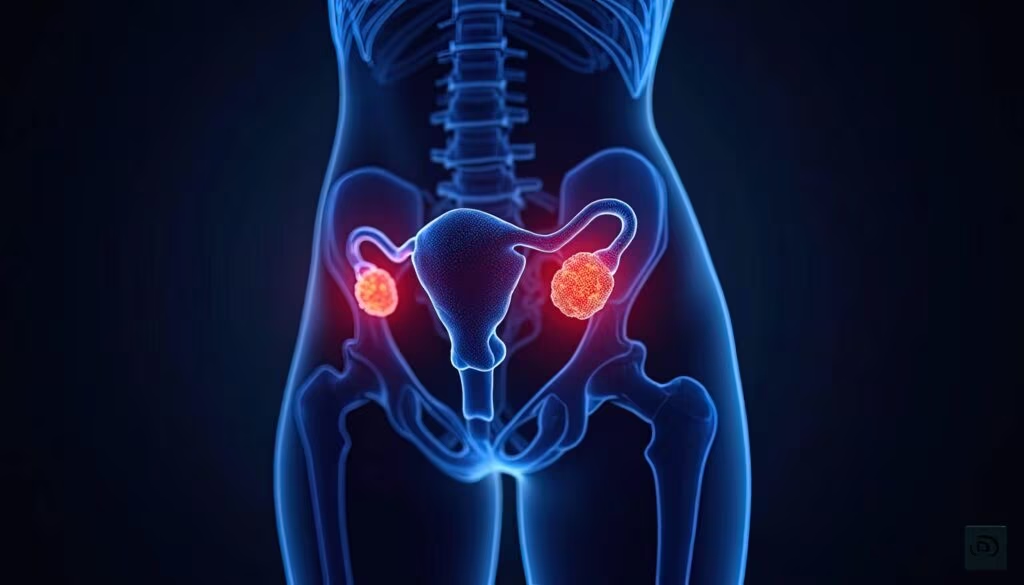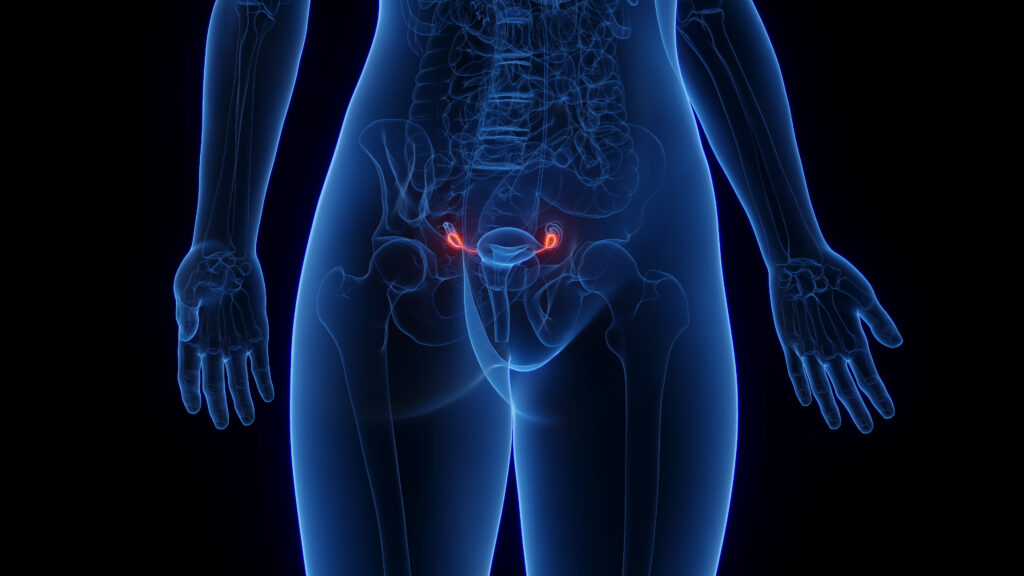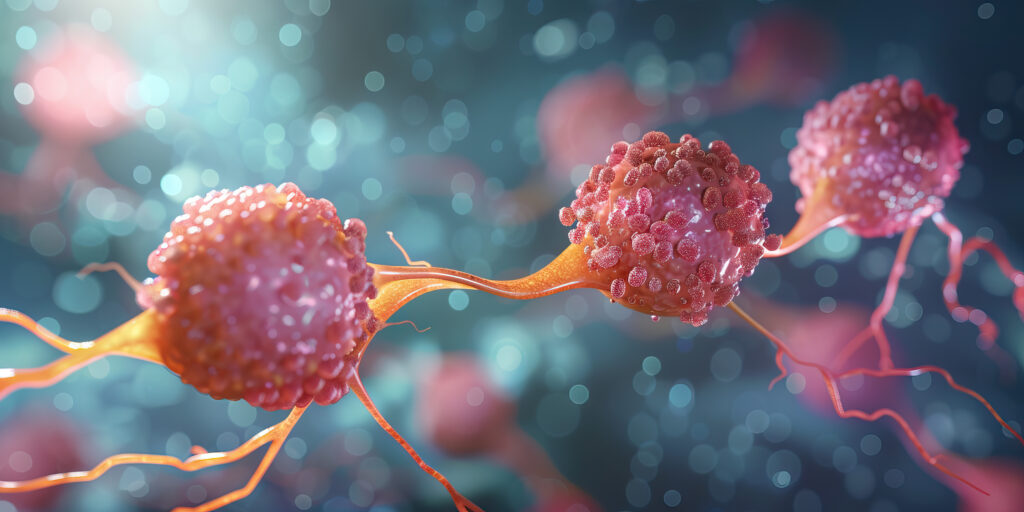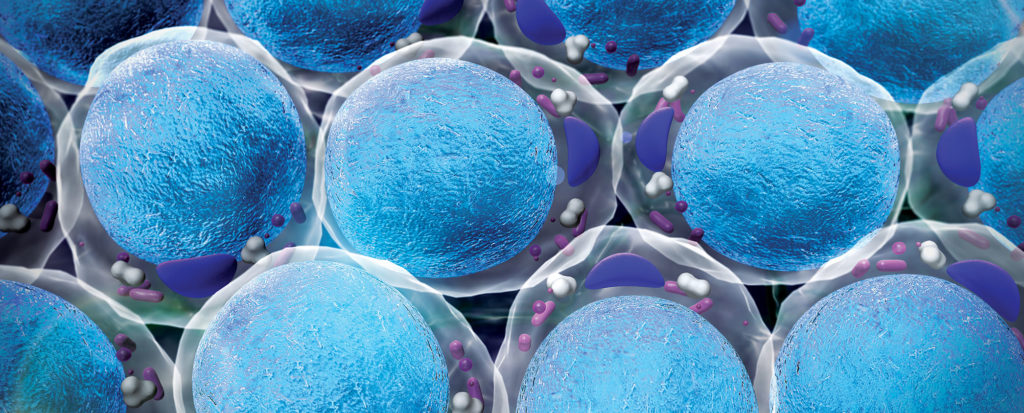Although much attention has been given to the study of post-menopause and the options in hormone replacement treatment (i.e. oestrogens and progestins), relatively little attention and awareness has been focused on the activity of endogenous or exogenous androgens in women. In fact, the life of a middle-aged woman is characterised by the co-existence of menopause and adrenopause, which sometimes participate to create the androgen-deficiency syndrome.
Although much attention has been given to the study of post-menopause and the options in hormone replacement treatment (i.e. oestrogens and progestins), relatively little attention and awareness has been focused on the activity of endogenous or exogenous androgens in women. In fact, the life of a middle-aged woman is characterised by the co-existence of menopause and adrenopause, which sometimes participate to create the androgen-deficiency syndrome. Thus, much more interest has been given to the study of androgen roles in the modulation of brain function in terms of sexuality, mood, cognition and the neuroageing process. This article will focus on the neuroactive effect of androgens with particular regard to the ∆-4 and ∆-5 androgen.
Androgen Level, Menopause and the Ageing Process
Several studies have investigated the effect of menopausal transition on androgen synthesis and their circulating levels. A significant reduction in testosterone (T) circulating levels occurs in pre-menopausal women. In fact, circulating T levels in women in their 40s are 50% less than of those of women in their 20s.1 Concerning post-menopause, this level has been reported as both changed and unchanged. Some studies report a small but significant decrease in T, androstenedione (A) and sex-hormone-binding globulin (SHBG) levels in the first six months after menopause.2,3 However, after spontaneous menopause the ratio of T/SHBG did not show any change3,4 even though in surgical menopause both T and A decrease (about 50%), suggesting an important role of the ovaries in T secretion after menopause. On the other hand, in post-menopause the principal source of circulating T is the peripheral conversion of A and dehydroepiandrosterone (DHEA).5
From the age of 30, circulating ∆-5 androgens fall linearly with age independently of menopausal transition. After 70 years of age, DHEA(s) levels are 20% or less of the maximum plasma concentrations, while cortisol levels remain unchanged. In fact, it has been hypothesised that during the ageing process the reduction of 17,20 desmolase activity, the enzyme that rules the biosynthesis of the ∆-5 adrenal pathway, may induce modifications in DHEA(S) synthesis.6,7 The decline in ∆-5 androgens and the parallel increase in cortisol/DHEA(S) ratio has been reported to be in part responsible of the physiological and/or pathophysiological age-related changes.8,9
It can be suggested that the decline of circulating androgens results from a combination of two events: ovarian failure plus age-related decline in adrenal androgens synthesis. The relative androgen deficiency in post-menopausal women may provoke an impairment in sexual function, wellbeing and energy, and may contribute to bone mass reduction. However, the decline in circulating T, A and DHEA levels begins in the decades that precede the menopause and sometimes the aforementioned symptoms can be detected in the peri-menopausal years as a consequence of the so-called adrenopause. In fact, as the menopause is characterised by a decline in gonadal function, adrenopause is characterised by the age-related reduction of the ∆-5 adrenal pathway.Androgens and the Brain – Local Action and Metabolism
There are an increasing amount of data supporting the biological basis for androgens as neuroprotectants or neuromodulators during brain development but also during brain ageing, and also the importance of androgens on the systems involved in cognitive function, mood disturbances and central drive of sexuality.10,11
One of the complexities in understanding the effects of androgens is that these steroids have a very broad spectrum of activity acting per se on nuclear receptors or throughout the metabolism into several neuroactive compounds. Androgen nuclear receptors are prominent in the hypothalamus, hippocampus, amygdala and pre-frontal cortex – areas that are essential for learning and memory.12
These brain areas represent targets for androgens during the ‘organisational/developmental’ phase, mainly in the foetal–neonatal period when oestrogens and aromatisable androgens modulate neuronal development and the formation of neuronal circuits, but they are the same brain regions that show functional loss with ageing.
It has been demonstrated that neurons and glia express enzymes able to convert testosterone to oestradiol and several 5a-reduced androgens.13 Furthermore, metabolism of dihydrotestosterone (DHT) results in the formation of 5α-androstan-3α,17β-diol (3αA-diol) as well as its 3βisomer (3βA-diol), both of which are capable of eliciting oestrogenreceptor-dependent responses.14 3αA-Diol also acts like the analogous metabolites of progesterone and corticosterone to enhance gammaaminobutyric acid (GABA)-benzodiazepine-regulated chloride channel function.15 DHEA may also exert its effect by acting as a substrate for brain intracrine conversion to testosterone and DHT in androgen target tissues.16 DHEA and its principal circulating metabolite, DHEA sulphate, have been demonstrated to exert a wide range of direct effects on neuronal function.17
It is of great relevance to remember that DHEA and DHEAS are also considered to be ‘neurosteroids’ because they are produced in the CNS and they may directly affect central function(s). The concentration of DHEA in the CNS is five to 10 times greater than plasma levels, and experimental studies indicate that the mammalian brain contains steroid pre-cursor such as cholesterol and lipid derivatives.18,19 The concentrations of DHEA in the rat brain remain unchanged for a long time after the removal of gonads and adrenals.
Experimental evidences suggest that the effects of DHEA and DHEAS on the CNS occur directly through specific binding to the γ-aminobutyric acidA (GABAA) receptor, thus blocking the GABA-induced chloride transport or current in synaptoneurosomes and neurons in a dose-dependent manner with an increase of the neuronal excitability.20 Moreover, a potentiating effect of DHEA on N-methyl-D-aspartate (NMDA) and sigma receptors has been reported in the rat brain.21
In addition, it has been demonstrated that chronic administration of DHEA in ovariectomised rats induces an increase of other neurosteroids not directly correlated with its metabolism, such as allopregnanolone, a GABAA agonist steroid. This increase has been evaluated in brain areas such as the hippocampus and hypothalamus and pituitary gland and in serum.22
In experimental animals, DHEA treatment induced a memory-enhancing effect; in vitro studies suggest a neurotrophic effect on neurons and glial cells.23
T administration to ovariectomised rats exerts a powerful effect on the endogenous endorphin system: it enhances beta-END levels not only at the hypothalamic level but also in several sovra-hypothalamic structures, affecting the activity of endorphinergic neurones in the hippocampus, as well as in the frontal and parietal lobes. In contrast, the endorphin content of these sovra-hypothalamic structures was not affected in male rats by orchidectomy or by any steroid replacement treatments.28
These results suggest that cerebral structures receiving the endorphinergic peptide exhibit a sex-based difference in opioid-system sensitivity to gonadal hormones.29 Beta-endorphin (beta-END) is the endogenous opiate that has received the most research attention. It is also involved in emotional regulation, pain mechanisms and the reward system. In addition, it has been postulated that beta-END might play a major role in the mechanism of sexual arousal and pleasure in both sexes.30 In both female and male rats, the administration of DHT for two weeks did not induce any changes in brain or plasma levels of beta-END, suggesting that the reduction of T to Beta-endorphin is the endogenous opiate that has received the most research attention. It is also involved in emotional regulation, pain mechanisms and the reward system.
DHT by 5α-reductase is not involved in the mechanism of action underlying T modulation of central opioid activity. The increase in beta-END content following oestradiol administration to both female and male rats suggests that the aromatisation of T is most likely the main mechanism of action by which ∆-4 androgen treatment induces an increase in endogenous endorphins. While this result supports previous studies investigating the role of endogenous androgens in the modulation of male rat hypothalamic proopiomelanocortin (POMC) content,31 our recent data suggest that aromatase activity may be crucial for steroid modulation of endorphin levels also in females.
The removal of testes in rats and monkeys reduces the density of synaptic contacts on dendrites spines of cornu ammonis 1 (CA1) pyramidal neurons. This effect is rapidly reversed following treatment with either testosterone or the non-aromatisable androgen DHT, suggesting that maintenance of normal synaptic density is androgen-dependent via a mechanism that does not require intermediate oestrogen biosynthesis. Similar effects of these androgens are observed in ovariectomised female rats, except that in the female the actions of testosterone include a substantial contribution from oestrogen formation. The ability to stimulate hippocampal spine synapse density is not directly related to systemic androgenic potency; thus, weak androgens such as dehydroepiandrosterone can stimulate hippocampal spine density to an extent comparable to that of DHT. In addition, it has been demonstrated that testosterone deprivation increases central levels of beta-amyloid and this protein dramatically decreases when a testosterone or DHT treatment is initiated. Furthermore, cognitive tests are deeply impaired after gonadectomy in rat models, while a fine performance is restored following administration of testosterone and two of its metabolites, DHTand 3-alpha androstanediol.24
Neuroendocrine Effects of Dehydroepiandrosterone
Few studies have been conducted in humans to investigate the physiological function of DHEA(S) and the possible role of this molecule on the CNS. DHEA administration at 50mg/day induced an improvement in psychological and physical wellbeing in post-menopausal women.8 Recently, it has been shown that the oral administration of DHEA 50mg/daily tends to improve well-being and mood only in women.25 Moreover, short term treatment with DHEA(S) (30–90mg/day for four weeks) in middle-aged and elderly patients results in an antidepressant effect.26
Long-term treatment with lower doses of DHEA (25mg for 12 months) significantly increased levels of DHEA, DHEAS, androstenedione, testosterone, DHT, oestrone, oestradiol, progesterone, 17 OH-progesterone, allopregnanolone, β-endorphin and GH up to those observed in fertile women. In contrast, cortisol and gonadotropin levels progressively decreased in all groups. In particular, during the treatment period all adrenal androgens and progestins showed a significant increase in their response to ACTH, while the cortisol response decreased significantly. The results suggest a significant DHEA-induced change in adrenal enzymatic activities, as also evidenced by the change in precursor/product ratios during therapy, suggesting age-related changes in adrenal function.27
Conclusion
Androgens play a primary role in female physiopathology. The age-related decline in the production of ovarian and adrenal androgens may significantly affect a woman’s health and wellbeing. Androgen replacement therapy should be first-choice treatment, especially in younger women with either premature ovarian or surgically-induced menopause suffering from a loss of wellbeing, fatigue or libido that is not modified by oestrogenic therapy.
Among androgens, ∆-5 androgens such as DHEA(S) should be considered as an alternative choice to treat the androgen deficiency syndrome and/or symptomatic post-menopausal women.












